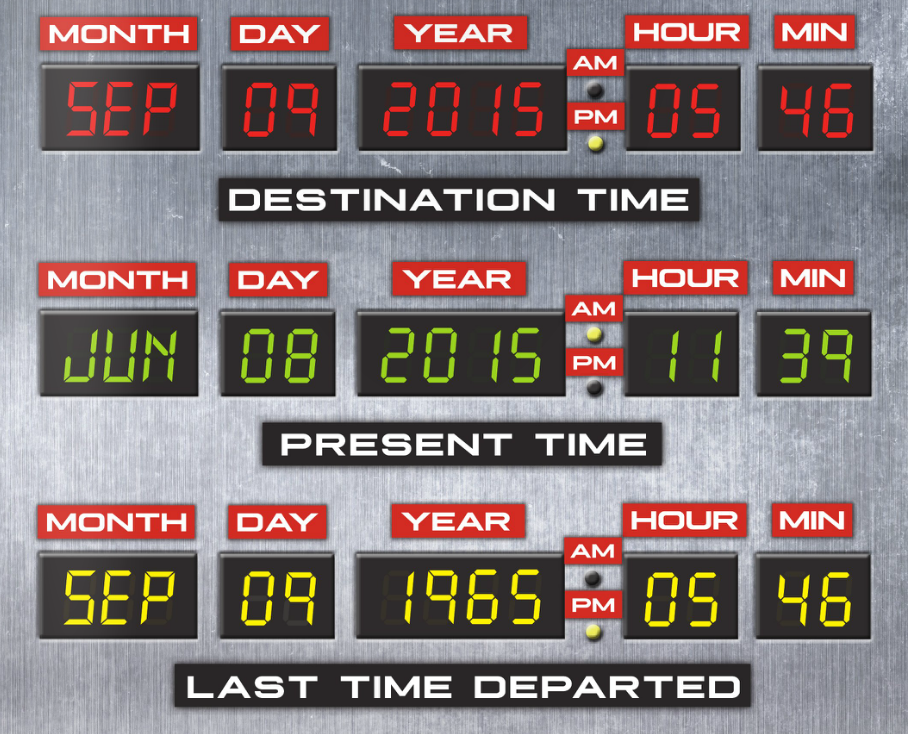
Located in the basement of the Maggie Benston Centre, down a long, seemingly neverending hallway, SFU’s Archives and Records Management office is an area that most SFU students never take the time to visit.
Despite containing some of our school’s oldest and most fascinating documents, the Archives — due in large part to a lack of awareness of their existence — have remained inaccessible to the majority of people who frequent the hill.
However, as part of SFU’s 50th anniversary celebrations, the Archives are rolling out a Digital Repository — a project which has been years in the making — which should not only help our archivists continue to manage and permanently store all future important SFU records, but open up access to our past in a way never before possible.
Records Store
As long as SFU has existed, so have our archives. Although they were founded by the university’s first librarian Donald Baird at the school’s inception, he quickly worked to separate them from the library and into the official repository of the university.
SFU Archives’ collection includes a multitude of historical records in many formats, ranging from academic calendars to the correspondence of SFU’s inaugural president to original photographs of the initial construction of the Burnaby campus.
Archive staff work to assist students, faculty, and community members navigate their way through the holdings to assist with them with whatever research they are doing.
Whether someone is looking to find out the name of a Biology course they took in 1987 for their resume, to investigate SFU’s radical past for a course paper, or even just to write an article for their student paper, the Archives are an important resource at SFU.
“If we don’t start capturing [digitally created records] in our systems, we are going to be losing all that history.” – Richard Dancy, Project Leader, Digital Records Repository Project
Due to exceptions to the right of access, resulting from freedom of information and privacy laws, as well as other issues including copyright, some of the Archives holdings are kept private.
However, while records with open access are easily searchable on an online finding aid, they still require a visit to the physical space of the Archives office to actually view them. But, as a new era begins at the Archives this year, they are expected to become a whole lot more conveniently accessible for future generations.
Time Machine
Although SFU Archives’ main concern is the past, the future is rapidly becoming just as important to them.
With so much of what we create turning to the digital realm in the 21st century, records are no longer an inherently physical product which complicates the old ‘papers in a box in a climate controlled room’ surefire method of archiving.
While it might be easy to save something onto a disc today, guaranteeing its long-term preservation is another story.
Since the 1980s, when it became apparent that machine readable records were on their way, archivists have known that the future would bring drastic changes to their operations. However, it’s only been very recently that they’ve actually been able to do anything about it.
Richard Dancy, the project lead for SFU’s Digital Records Repository Project, has been working in various positions at the Archives since 1998 and believes it’s only been in the last 10 to 15 years that archivists have really been able to grasp what’s going on.
“I think archivists knew the general issues but it seemed overwhelming to actually get started because, with the tools, it seemed like you needed to be an IT programmer,” he explained. “But what’s very cool [is that] all these [new] tools are making it possible for archivists to start grappling with these issues [on their own].”
Dancy, along with fellow archivist Paul Hebert, first experimented with an early version of Archivematica, the open-source tool which has allowed them to since build the Digital Repository, back in 2011.
“We [got] pretty good at [the] workflows and procedures and tools for paper records that we’ve developed over the years,” Dancy explained on the motivation for the project. “We wanted to be able to do the same thing with digital because everything is created digitally now. A lot of it never was on paper. So, if we don’t start capturing that in our systems, we are going to be losing all that history.”
After some experimentation, in 2013, the Archives received a three-year UPF (University Priority Funds) grant which has allowed them to get the Repository’s infrastructure in place. The pilot project is now slowly beginning to roll out this year.
“What we’ve been doing up to now is taking things in, testing them, testing the software,” Dancy explained. “We’ve just [gotten] our infrastructure ready, so that means we can now take things in and commit to preserving them.
Although the exact nature of the Digital Repository is quite complex and technical, it is essentially a system that will allow the Archives to preserve digitized records. Everything from an email to an entire website can now be archived for future reference.
According to Archives staff, SFU is one of the first universities in Canada to have an integrated access and preservation system for their archives, a development which is aiding in their 50th anniversary celebrations.
Blasts from the Past
While a lot of the motivation behind the creation of the Digital Repository was to allow for new formats of digital documents to survive in order to aid the researcher of tomorrow, an additional benefit is that the Archives are also digitizing many of SFU’s oldest and most precious documents.
In honour of SFU turning 50 years old, the Archives are launching a blog entitled This Day in SFU History, which will serve as the public’s official introduction to the Digital Repository.
Heading up the project, special projects archivist Michelle Curran has organized the digitation of 12 major groupings of records, which will be released one by one online each month beginning in June and continuing through May 2016.
“It will be just kind of telling a story and at the bottom [giving] a link to the digitized items,” Curran explained. “In terms of research and people interested in the subject matter, I will recommend other collections at our institution and at other locations as well.”
The first record set for release on the blog on June 9, is a digitized copy of an original acetate-based, 16mm colour film with a magnetic sound track entitled “This is Simon Fraser University,” which was produced by the SFU Resources Office in 1971.
“The film sketches various aspects of life on campus in the the early ‘70s. It’s one of approximately 1,200 films that we have stored in our film archives,” Curran explained. “Now, you’ll be able to stream it in SFU AtoM from any location on campus or wherever you’re digitally connected.”
Also slated for release online are not only popularly requested items such as academic calendars, convocation books, and the opening ceremony program from 1965, but also some records, previously unavailable to the public in any form and which date back to centuries before SFU opened.
“[We will be releasing] the originally penned Simon Fraser letters, some of them date back to the mid 1800s,” Curran explained. “These ones were very fragile, so they would never be circulating. Now that we’ve digitized them, people can get a sense and say, ‘oh wow, that’s what they look like. That was his penmanship back in the day.’”
The Fraser letters were first acquired by SFU as part of research leading up to their grand opening, and in order to digitize them, Curran said that a preservation specialist was consulted to clean and repair the letters. The conservator said that they were in excellent condition despite nearly being lost for good.
“[We will be releasing] the originally penned Simon Fraser letters, some of them date back to the mid 1800s.” – Michelle Curran, Special Projects Archivist
“People thought they were missing for a few decades until the ‘80s when somebody found them. They were in a locked drawer when someone discovered them.”
While Curran’s This Day in SFU History project is only intended to be produced for a year, the documents being released are staying online for good. According to Dancy, the Digital Repository will continue to make a lot more documents available online for people at home.
“Yes, [we] definitely [want] to expand access. People want that. They see our descriptions online and they think, ‘Where are the records?’” Dancy explained. A goal of theirs, he says, is “definitely is to broaden access. It’s a big goal.”
Back to the Future
Although the Digital Repository is an enormous step forward for the Archives in terms of the future of preservation and opening up their accessibility, there is still a lot of work to be done.
“I think as archivists, you want to be careful not to say that we’re offering the ‘Holy Grail’ system of preservation, [but ] it’s definitely a step towards that,” Curran said, explaining that a personal visit to the Archives can still hold value.
“There’s still a lot of contextual information that you might not necessarily get when reading something online. It’s the same thing with a book; a lot of it takes interpretation and talking to people,” she explained. “In the case of archives, we talk to people who actually work firsthand with the materials as they come in.
“So it’s still good to come in, see the records for yourself and maybe even, if you get a chance, still physically hold something tangible. I think it gives you a better experience.”
For Dancy, a big concern going forward is how to keep the project going into the future as they are currently entering the last year of their UPF grant.
“We know how much it costs now to do this year after year, and [we’re now going to] try to roll that into a permanently funded program” he explained. “Even though the grant ends after three years, the need for preservation is ongoing. That’s our goal, [for the Digital Repository to] just be integrated into the archives program.”
Despite the few question marks going forward, Dancy, along with the rest of the Archive staff, are optimistic about the future of the Digital Repository.
“It’s an exciting project because [. . .] in the last 10 to 15 years, there’s all sorts of stuff going on and it’s multidisciplinary. You’ve got archivists, but also librarians and museum people,” he explained. The open Archival Information System model that they are following, he continued, “was developed by NASA. Their own digital data has become standard. So it’s a whole kind of community building up around that. [. . .] It’s kind of exciting to be in it.”
SFU Archives Digital Repository might very well be bringing the past to the future, but for all those involved, there’s no time like the present.
